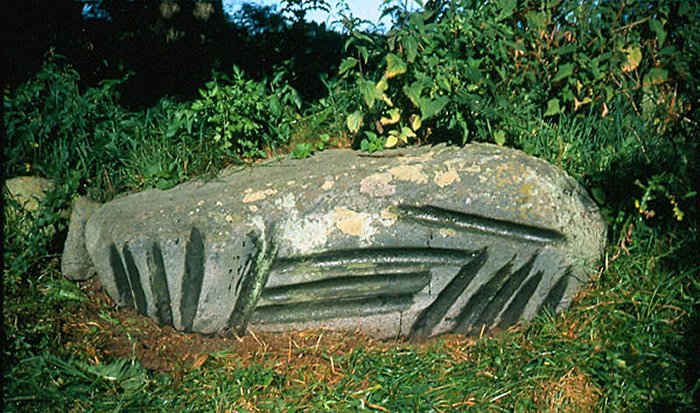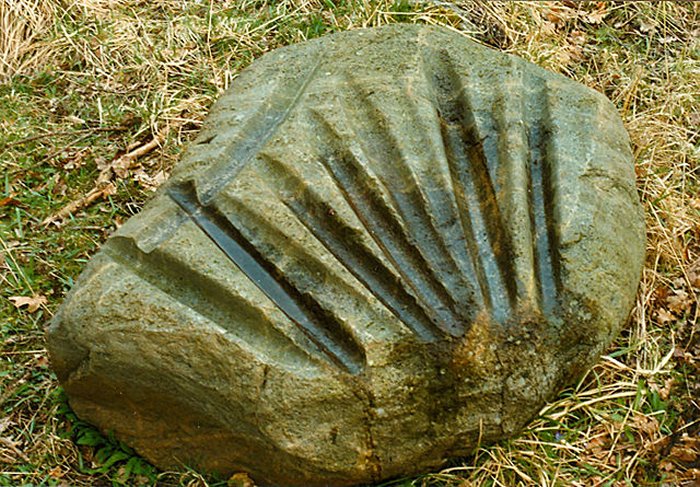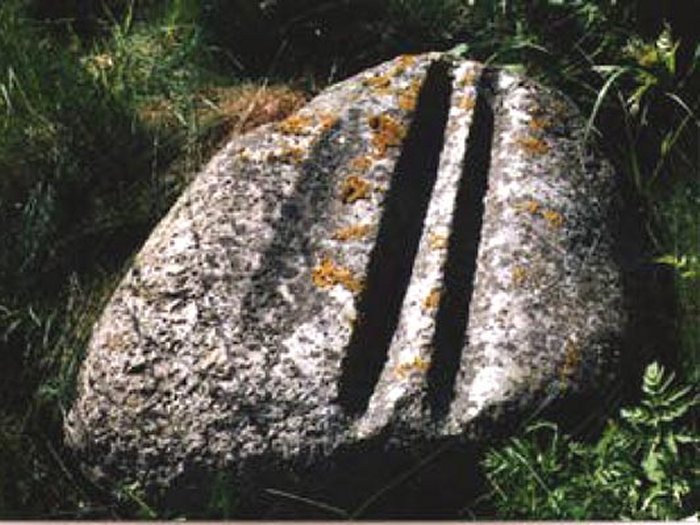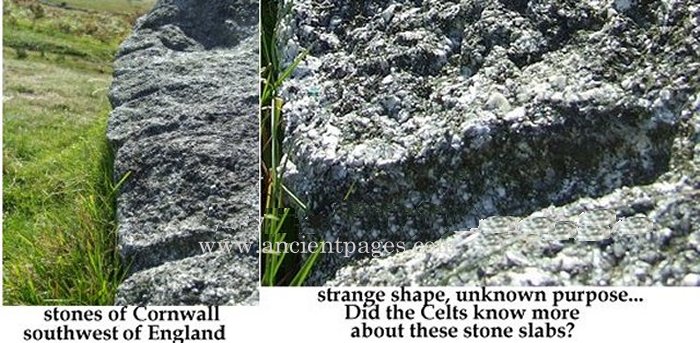Mystery Of The Gotland Grooves – Ancient Astronomical Observatory?
A. Sutherland - AncientPages.com - There are about 3,600 known prehistoric grooves on stones scattered throughout the island of Gotland in Sweden. As many as 700 of them are scored directly into the limestone bedrock, the rest are found on about 800 stones.
What do they mean? Were the mysterious Gotland grooves once part of an ancient astronomical observatory?
Gotland is a very old place. It has Neolithic structures dating approximately 3600 BC may be more. Several of these can be categorized as complexes. They often include dolmens, and stone rows or circles.
Most have been found to have astronomical alignments. Some have to do with the Moon, but others are also aligned to major events of the Sun and have possible connections to planets, stars, and constellations.
The length of the grooves varies from about 0.5 to 1 meter. They are between 5 cm to 10 cm wide and 1 cm to 10 cm in depth. The most important feature of the grooves appears to be in their alignment. Studies reveal that the grooves on a stone are not parallel. Instead, they are oriented in several directions, some grooves crossing other grooves. Yet on any particular stone, the grooves are not randomly oriented but seem to follow a prescribed orientation, although that orientation may change slightly from grove to grove.
Researchers have analyzed them and say that 1,256 grooves are aligned with certain positions of the celestial bodies, like the sun or the moon. Most of them are oriented east to west.
Most known archeoastronomy sites are far more geographically confined than these stones. Who were the mysterious builders of the stones? Were the creators nomads that wandered the island and created new stones where ever they went? The reason for so many of these stones scattered across many square miles has been completely lost in time.
Interestingly, there are other ancient sites where we encounter similar stones. Alfred Watkins (1855 – 1935), an English author, self-taught amateur archaeologist, antiquarian and businessman said that he knew of several examples of vertically grooved stones 'Most amazing of all, are those like the 'Queen stone' (Right), near Symonds Yat on the Wye, which have deep grooves running down them," he said.
Many believe the markings are naturally formed by rainwater, but they're also researchers who believe they must be artificially cut and Watkins is among them.
'Queen Stone' markings are from 5 to 7 inches deep and only 2 to 2.5 inches wide, and suddenly ceasing near the base of the stone. Mysterious grooves found on many of stone slabs lying on the ground in Cornwall, southwest of England are also a big mystery. It is not known what kind of tools made these grooves or other strange, thousands of years old marks in the stones. Most of them are a result of very sophisticated practices impossible to achieve by hand.
Prehistoric stonemasons left a mysterious legacy in the form of incised stones that can be found in many countries around the world.
Could the ancient stone masters form stone as we today give forms and shapes to a piece of clay?
Ancient records reveal one of the secrets of the enigmatic stone builders. It is said that they used a decomposing substance obtained from certain kinds of grass, which had an unusual ability to soften stones into malleable clay-like material. What kind of prehistoric machine may be responsible for these strange markings on the stones? Their meaning is obscure until today.
Written by – A. Sutherland AncientPages.com Staff Writer
Copyright © AncientPages.com All rights reserved. This material may not be published, broadcast, rewritten or redistributed in whole or part without the express written permission of AncientPages.com
Expand for referencesMore From Ancient Pages
-
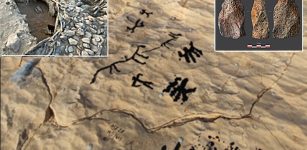 Unique Finds Discovered In Oman – Rub’al-Chali Desert Reveals Its Secrets
Archaeology | Apr 20, 2023
Unique Finds Discovered In Oman – Rub’al-Chali Desert Reveals Its Secrets
Archaeology | Apr 20, 2023 -
 Teotihuacán: Enigmatic Birthplace Of The Gods And Its Obscure History
Civilizations | Jul 26, 2016
Teotihuacán: Enigmatic Birthplace Of The Gods And Its Obscure History
Civilizations | Jul 26, 2016 -
 Stribog – Slavic God Of Winds Associated With Destruction, Harvest, Evil And Good
Featured Stories | Jul 1, 2019
Stribog – Slavic God Of Winds Associated With Destruction, Harvest, Evil And Good
Featured Stories | Jul 1, 2019 -
 Is The Puzzling Miami Circle Much Older Than Previously Thought?
Featured Stories | Mar 14, 2021
Is The Puzzling Miami Circle Much Older Than Previously Thought?
Featured Stories | Mar 14, 2021 -
 When Did Humans Start Using Roads And What Civilization Built The First Paved Roads?
Archaeology | Oct 26, 2022
When Did Humans Start Using Roads And What Civilization Built The First Paved Roads?
Archaeology | Oct 26, 2022 -
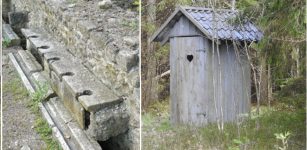 How Did People Go To The Toilet In The Past Before The Invention Of The Flush Toilet?
Archaeology | Jun 10, 2023
How Did People Go To The Toilet In The Past Before The Invention Of The Flush Toilet?
Archaeology | Jun 10, 2023 -
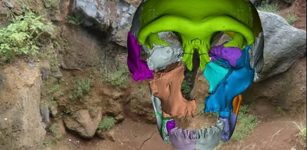 Unusual 300,000-Year-Old Jawbone May Belong To An Unknown Vanished Human Lineage
Archaeology | Dec 18, 2023
Unusual 300,000-Year-Old Jawbone May Belong To An Unknown Vanished Human Lineage
Archaeology | Dec 18, 2023 -
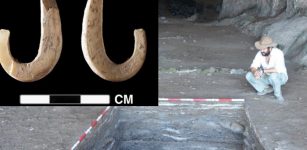 Late Pleistocene Human Colonization – What Makes Our Species Unique Compared To Other Hominins?
Archaeology | Apr 29, 2020
Late Pleistocene Human Colonization – What Makes Our Species Unique Compared To Other Hominins?
Archaeology | Apr 29, 2020 -
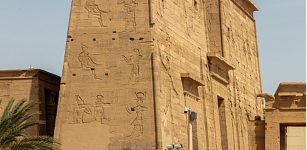 Researchers Use 21st Century Methods To Record 2,000 Years Of Ancient Graffiti In Egypt
Archaeology | Mar 31, 2023
Researchers Use 21st Century Methods To Record 2,000 Years Of Ancient Graffiti In Egypt
Archaeology | Mar 31, 2023 -
 Native Americans Helped Shape The Klamath’s Forests For A Millennia Before European Colonization
Archaeology | Mar 21, 2022
Native Americans Helped Shape The Klamath’s Forests For A Millennia Before European Colonization
Archaeology | Mar 21, 2022 -
 4,000-Year-Old Village Mentioned In Ancient Texts Unearthed Near Sacred City Of Varanasi
Archaeology | Mar 13, 2020
4,000-Year-Old Village Mentioned In Ancient Texts Unearthed Near Sacred City Of Varanasi
Archaeology | Mar 13, 2020 -
 Mysterious Ancient Jade Artifact May Offer Evidence Of Trans-Pacific Contact – Did Ancient Sailors From California Visit New Guinea?
Artifacts | Jan 14, 2018
Mysterious Ancient Jade Artifact May Offer Evidence Of Trans-Pacific Contact – Did Ancient Sailors From California Visit New Guinea?
Artifacts | Jan 14, 2018 -
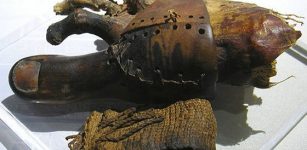 3,000-Year-Old Egyptian Artificial Wooden Toe In New Light
Archaeology | Jun 20, 2017
3,000-Year-Old Egyptian Artificial Wooden Toe In New Light
Archaeology | Jun 20, 2017 -
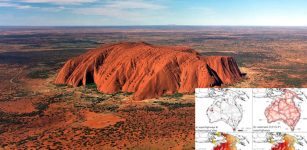 Superhighways Traveled By The First Australians Reveal A 10,000-Year Journey Through The Continent – New Study
Archaeology | Feb 3, 2023
Superhighways Traveled By The First Australians Reveal A 10,000-Year Journey Through The Continent – New Study
Archaeology | Feb 3, 2023 -
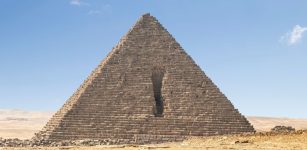 Mysterious Pyramid Of Menkaure Remains An Ancient Puzzle
Civilizations | Oct 8, 2022
Mysterious Pyramid Of Menkaure Remains An Ancient Puzzle
Civilizations | Oct 8, 2022 -
 Saqqara New Discoveries: Fifth Dynasty’s Pyramid Complex That Belonged To Queen Setibhor
Archaeology | Apr 15, 2019
Saqqara New Discoveries: Fifth Dynasty’s Pyramid Complex That Belonged To Queen Setibhor
Archaeology | Apr 15, 2019 -
 Huangluo: Long-Hair Village Where Women Don’t Cut Their Hair – A 2,000-Year-Old Tradition Of The Yao People
Ancient Traditions And Customs | Jun 18, 2017
Huangluo: Long-Hair Village Where Women Don’t Cut Their Hair – A 2,000-Year-Old Tradition Of The Yao People
Ancient Traditions And Customs | Jun 18, 2017 -
 Medieval Mythbusting – New Research Rewrites History Of Glastonbury Abbey
Archaeology | Nov 23, 2015
Medieval Mythbusting – New Research Rewrites History Of Glastonbury Abbey
Archaeology | Nov 23, 2015 -
 Bulgaria’s Aquae Calidae Spa Complex: More 40 Coins Dated To 4th Century CE – Found
Archaeology | Jul 24, 2020
Bulgaria’s Aquae Calidae Spa Complex: More 40 Coins Dated To 4th Century CE – Found
Archaeology | Jul 24, 2020 -
 What Does DNA From 1,700-Year-Old Individuals Dated To The Three Kingdoms Period Tell About Ancient And Modern Korea?
Archaeology | Jun 21, 2022
What Does DNA From 1,700-Year-Old Individuals Dated To The Three Kingdoms Period Tell About Ancient And Modern Korea?
Archaeology | Jun 21, 2022

